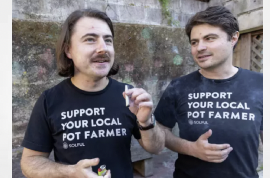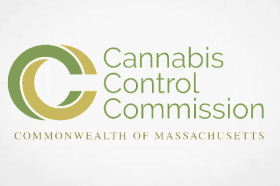Before we start. As we are a bit eighties here at CLR our first thought when reading about creating a Cannabis Futures Market, is, as Proust would say, “Remembrance Of Things Past” and one of our favourite Hollywood scenes of yore.
Here’s the full release on the subject
Redondo Beach, California–(Newsfile Corp. – November 12, 2019) – SECFilings.com, a leading financial news and information portal offering free real time public company filing alerts, announces the publication of an article discussing the developing commoditization of cannabis. As global markets emerge, there is demand from product companies to access cannabis- and hemp-derived ingredients. One World Pharma (OTC: OWPC) has instituted a futures program that, like commodities futures, provides those companies with price and supply certainty.
It has long been postulated that cannabis, following widespread legalization, will become a commodity and start acting like one. Though that hasn’t exactly come to fruition as of yet, owing in large part to a regulatory environment that remains fractured, there are forces at work in the industry that are bringing the commoditization of cannabis nearer to reality. In this article, we’ll take a look at those forces and how forward-looking companies might prepare for the emerging realities of a global cannabis market.
How Commodity Markets and Futures Work, Briefly
A commodity is a basic good or raw material, often used as an input in the production of other goods and services, that is widely traded. The most common commodities are food staples like meat, wheat, corn, and sugar; energy sources like oil; and metals like gold, silver, and copper. Commodities like these are defined by a general consistency of quality across the market, so that price and availability become the main factors in a purchase. For example, and allowing for some variance, sugar produced by one company isn’t going to be all that different than sugar produced by another.
There are a lot of companies using sugar to make finished products, even in places that aren’t suited to sugar production. So there is a global market for sugar, and that market employs futures contracts to help everyone involved reduce risk and achieve price certainty. Company X commits to buying Y amount of sugar at a particular time in the future from producer Z, at an agreed-upon price. This ensures company X’s supply to create the end products with a guaranteed cost of goods. Sugar producer Z can then commit to production levels knowing they will sell their sugar at a certain price.
The futures system provides certainty on both ends of the deal, hedging against unforeseen price fluctuations. Without it, product companies could well end up losing money due to rising costs of materials, and raw material providers could end up with too much material unsold due to dropping demand. Futures are like an insurance policy, risk management tool, and production planning guide all rolled into one.
Cannabis as a Commodity
In order for cannabis to achieve true commodity status, near-global legalization would have to take place. That is not on the immediate horizon, but plenty of countries are legalizing cannabis in some form (mostly medical) and the emergence of hemp-derived CBD (the main non-psychoactive ingredients in cannabis) is creating its own international marketplace. What’s more, many of the countries that have legalized cannabis are not necessarily suited to growing the plant, due to either climate or regulatory issues. For instance, Germany and Poland have legalized medical marijuana but have yet to implement a cultivation program.
Canadian companies are racing to fill the international demand for cannabis and hemp derivatives (the flower is not exportable, but extracts, seeds, and biomass are). Canada is home to probably the most advanced legal, regulated cannabis industry in the world. But the fact is that cannabis, hemp, and extract production are high cost endeavors in a) first world countries situated in b) cooler climates like Canada where snow typically begins in October/November and stays until March/April.
Source: https://finance.yahoo.com/news/future-cannabis-industry-could-depend-140000366.html



















